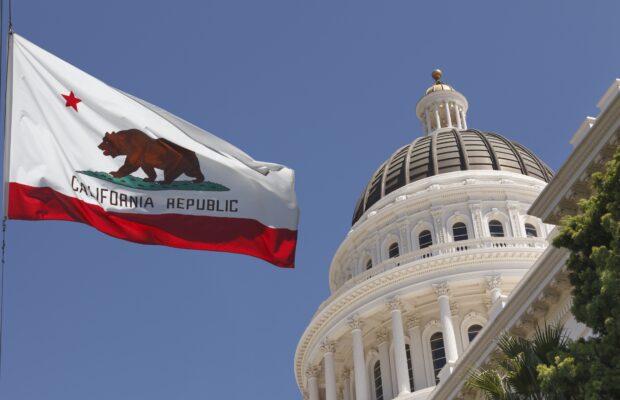As we discussed in prior posts from November 2022 and February 2023, San Francisco voters passed the Empty Homes Tax Ordinance, which is now codified in San Francisco Business Tax and Regulations Code Article 29A (the “Empty Homes Tax”), and becomes effective as of January 1, 2024.
San Francisco (the “City”) will impose the annual Empty Homes Tax on each person that owns a building with three or more “Residential Units” for keeping any of those units “Vacant” during the prior tax year. While the Empty Homes Tax will only apply to Vacant Residential Units, the filing requirement will apply to all non-exempt owners of Residential Units, even if no tax is due.
In the beginning of 2023, local landlords filed a lawsuit challenging the validity of the Empty Homes Tax. As discussed further at the end of this post, on December 20, 2023, the San Francisco Superior Court ruled that the case would be allowed to proceed, even though the Empty Homes Tax has yet to be assessed or collected—denying the City’s reliance on California’s longstanding “pay first, litigate later” rule.
Overview of the Empty Homes Tax
A “Residential Unit” for purposes of the Empty Homes Tax means a “house, an apartment, a mobile home, a group of rooms, or a single room that is designed as separate living quarters, other than units occupied or intended for occupancy primarily by travelers, vacationers, or other transient occupants. Separate living quarters are those in which the occupants live and eat separately from any other persons in the building and which have a kitchen and direct access from the outside of the building or through a common hall.”
“Vacant” for purposes of the Empty Homes Tax means “unoccupied, uninhabited, or unused, for more than 182 days, whether consecutive or nonconsecutive, in a tax year.”
For purposes of the 182-day threshold, certain periods of vacancy are not counted. Periods of vacancy which are not counted toward the 182-day threshold include the following:
- Building Permit Application Periods – the period following the date that an application for a building permit for repair, rehabilitation, or construction with respect to a Residential Unit is filed with the City, through the date that the Department of Building Inspection grants or denies such application (not to exceed one year);
- Construction Periods – the one-year period following the date that the City issues a building permit for repair, rehabilitation, or construction with respect to a Residential Unit;[1]
- Disaster Periods – the two-year period following the date that a Residential Unit was severely damaged and made uninhabitable or unusable due to fire, natural disaster, or other catastrophic event;
- Homeowners’ Exemption Period – the period during which a Residential Unit is the principal place of residence of any owner of that Residential Unit and for which such owner validly has claimed either the homeowners’ property tax exemption under Section 218 of the California Revenue and Taxation Code or the disabled veterans’ exemption under Section 205.5 of that Code;
- Lease Periods – the period during which any owner of a Residential Unit or any person in the Owner’s Group (as defined in Article 29A) of that owner leases that Residential Unit to one or more tenants under a bona fide lease intended for occupancy, but not including any lease or rental of that Residential Unit to anyone in the Owner’s Group or to travelers, vacationers, or other transient occupants;
- New Construction Periods – the one-year period following the date that the City issues a certificate of final completion and occupancy with respect to a Residential Unit in a newly erected building or a newly added Residential Unit in an existing building;
- Owner Death Period – upon the death of an owner who was the sole occupant of a Residential Unit immediately prior to death, when such Residential Unit passes to a co-owner, or the deceased owner’s estate, heirs, or beneficiaries, the 182-day period does not include the period during which such Residential Unit is unoccupied, uninhabited, or unused due to the deceased owner’s death (limited to one year, unless such Residential Unit is subject to the authority of a probate court); and
- Owner in Care Periods – the period during which a Residential Unit is unoccupied, uninhabited, or unused because all occupants of the Residential Unit who used that Residential Unit as their principal residence are residing in a hospital, long term or supportive care facility, medical care or treatment facility, or other similar facility.
Exemptions & Exclusions
Excluded from the definition of “Residential Unit” are any units to which the Welfare Exemption from property tax applies, or any unit in an operational nursing home, residential care facility, or other similar facility. The Empty Homes Tax also provides a broader exemption for any organization with a valid exemption from income taxation under Section 501(c)(3) of the Internal Revenue Code.
Residential Units located in a building with two or fewer Residential Units are exempt from the Empty Homes Tax.
Filing Requirements and Applicable Rates
The Empty Homes Tax will apply beginning January 1, 2024, but will not be collected until 2025. The applicable rates for 2024 are as follows:
- $2,500 for each Residential Unit with square footage less than 1,000;
- $3,500 for each Residential Unit with square footage 1,000 to 2,000;
- $5,000 for each Residential Unit with square footage over 2,000.
Any person that owns a Residential Unit at any time during the tax year, unless exempt from the Empty Homes Tax pursuant to the exemptions described above or covered by the homeowners’ exemption period for the entire year, must file a return for that tax year with the Tax Collector. That is, all owners of Residential Units, unless exempt, must file a return—even if no Residential Units are vacant and even if no Empty Homes Tax is due for the year. The Tax Collector has not yet released the form of the Empty Homes Tax return, but filing requirements and collection of the Empty Homes Tax will begin in 2025.
Update on Pending Litigation
In February of 2023, the San Francisco Apartment Association, the Small Property Owners of San Francisco Institute, the San Francisco Association of Realtors, and four individual landlords filed a lawsuit in San Francisco Superior Court challenging the constitutionality of the Empty Homes Tax. The lawsuit was brought under California Government Code Section 50077.5, which allows for challenges to test the validity of a voter-approved special tax.
The City’s primary defense in the lawsuit thus far has been that California law does not allow for a challenge to the Empty Homes Tax, and, if a challenge is available, it would only be available after the payment of the tax.
On December 20, 2023, the Superior Court overruled the City’s challenge, meaning that the lawsuit may proceed and the validity of the Empty Homes Tax may be challenged, even though the tax has not yet been assessed or collected. However, unless or until the resolution of the lawsuit results in changes to the Empty Homes Tax, the tax will take effect beginning in 2024.
We will continue to provide further updates on the Empty Homes Tax and the status of the lawsuit when they are available.
[1] However, if the City issues multiple building permits to or for the benefit of one or more persons in the Owner’s Group (as defined in SF Bus. Tax. & Reg. Code § 2952) for the same Residential Unit, the Construction Period shall mean only the one-year period following the issuance of the first building permit to or for the benefit of anyone in the Owner’s Group.



